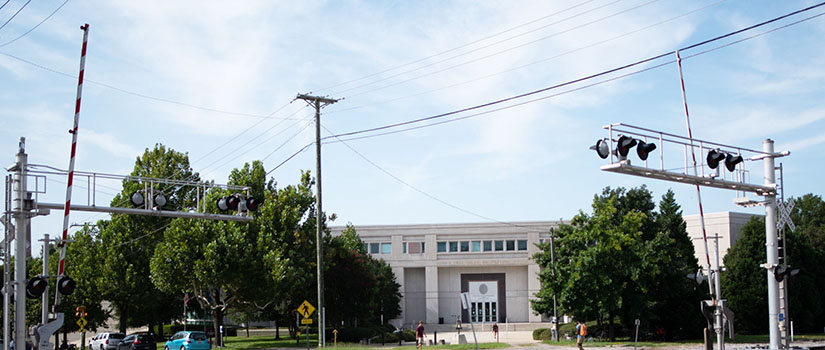First-of-its-kind software will help first responders identify best routes for emergency responsee
Assistant Professor Yu Qian of the Civil and Environmental Engineering Department is hoping to make life better for first responders and the communities they serve through work with the Federal Railroad Administration (FRA) and the City of Columbia by optimizing emergency response routes. His team is developing revolutionary software to help first response personnel navigate around railroad crossing blockages and traffic congestion.
“Railroad crossing blockages can be a huge disruption. Commuters hate it, but more importantly, it creates a dangerous situation for first responders when in route to emergency situations,” Qian says.
Qian explains that the idea for his research arose given the lack of information from existing navigation apps on whether railroad crossings will be blocked and for how long. This issue plagues not only first response personnel but commuters and students traveling to and from the University of South Carolina campus. He then approached the City of Columbia, railroads and FRA on how to obtain railroad schedules and upcoming blockages.
The FRA uses Positive Train Control (PTC), a processor and communication-based system designed to prevent train accidents. PTC technology can control train speeds and movements if a train operator fails to take appropriate action based on current conditions and contains train operation information such as route, length and types of freight. For its software development, Qian’s research team used information from the PTC system to calculate estimates for train arrival and departure times. By tracking a train’s speed, location and direction, the software can determine when a train will be at a specific crossing and for how long. It also uses motion vision and artificial intelligence to compute congestion times caused by vehicles waiting to cross.
This initial study and software development concluded in August and led Qian to a new idea: How can this information be used to aid 911 dispatchers? According to Qian, when a dispatcher is working to allocate emergency personnel for a call, it is a stressful situation and decisions must be made immediately. “We realized that simply giving the dispatchers information about what crossings are blocked might be overwhelming. Instead, we wanted to develop a navigation system that will identify the optimal routes to follow,” Qian says.
“Railroad crossing blockages can be a huge disruption. Commuters hate it, but more importantly, it creates a dangerous situation for first responders when in route to emergency situations.”
-Yu Qian, Civil and Environmental Engineering
The navigation system that Qian’s team is now developing will integrate railway and street car information into a cloud computing platform. Qian expects the research to conclude next year, with Columbia as a test site in addition to a collaboration with the FRA for testing in other cities. Because railroad timetables are considered a matter of national security, only first response personnel will have access to the secure system.
“When researching these issues, we read many stories from first responders about what happens when they’re faced with the unexpected. There were reports from firefighters who had to watch from the other side of a railroad crossing as homes burned down. We hope this system will help ease those situations, save lives, save time and make their work more efficient,” Qian said.
Qian has been an assistant professor at the College of Engineering and Computing since 2017. His research interests include transportation geotechnics and railroad infrastructure-related research, mainly focusing on heavy haul and transit railroads, high speed rails, artificial intelligence, and automatic track inspection and maintenance.
